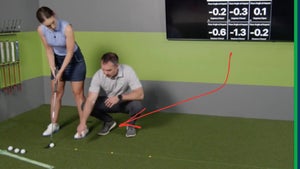Welcome to Stuff Golfers Should Know, a GOLF.com series in which we reveal all kinds of useful golf (and life!) wisdom that is sure to make you the smartest, savviest and most prepared player in your foursome.
***
To concede, or not to concede. That is the question. Whether you should make your partner knock in a short putt or tell them to pick it up, come on, get moving.
Or, phrased another way: when is the right time to grant a gimme?
For the most cutthroat competitors, the answer is “never.” But that’s not the golf most of us play. In our world, it all comes down to context and common sense.
A six-inch putt? That’s good in every instance. But a two-footer? Well, now, that depends.
How slippery is the putt? How serious is the match? Is there any chance that you’re holding up play?
Vagaries abound. But this much is certain: just as it’s a drag to play with seasoned golfers who sweep away everything within five feet, it’s also frustrating to be slowed down by newbies who haven’t learned that you don’t have to mark when you leave one on the lip.
Good thing there’s a sweet spot in between.
The phrase “inside the leather” exists for a reason. It isn’t perfect (some putters, after all, are longer than others) but it’s a pretty handy guide. It refers to the distance between the bottom of the putter grip and the blade, and it is something you and your partners can all agree on at the outset of your round.
Any time you’re wondering whether a putt should be conceded, lay down a putter and do the simple measurement (yes, it should be the same putter every time). If it’s inside the leather, take it away.


